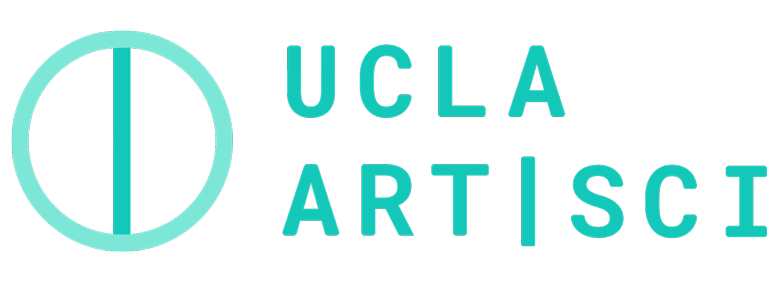James Gimzewski, Elected to Britain's prestigious Royal Society
James Gimzewski, UCLA Distinguished Professor of Chemistry and Biochemistry and a member of the California NanoSystems Institute (CNSI), was today elected a 2009 Fellow to the prestigious Royal Society, based on his scientific excellence.
“It’s a great honor,” said Gimzewski, who grew up in Glasgow, Scotland, and is a U.K. citizen. “The Royal Society was established in the mid-1600s.”
Gimzewski applies nanotechnology to real-life problems, such as nano-medicine, where his research may lead to more effective treatments for cancers and other diseases. He hopes his research may lead to more personalized medical treatment.
His research overlaps chemistry, nanotechnology, physics, biology, medicine, engineering and art. He is the scientific director of UCLA’s Art | Science Center, which has a gallery in CNSI and a lab at the Eli and Edy Broad Art Center at UCLA, and director of the CNSI’s Nano & Pico Characterization Laboratory.
“It is only now that nanotechnology has come to the point where it can start to change the world,” Gimzewski said. “We may be able to get to the point where we can dramatically reduce medical costs through nanotechnology. We may also be able to produce cheap, mass-produced solar cells, and fuel cell technology, to name just a few possible applications. Can pharmaceuticals be delivered right to a tumor without killing off surrounding healthy cells? Nano-medicine holds great promise.”
In December 2007, Gimzewski and UCLA colleagues published research in the journal Nature Nanotechnology reporting that metastatic cancer cells are softer than healthy cells, using state-of-the-science nanotechnology that measures the cells' softness. The study represented one of the first times researchers have been able to take living cells from human cancer patients and apply nanotechnology to analyze them and determine which were cancerous.
When cancer is spreading, the diseased cells travel throughout the body and maneuver through tight spaces; the cancer cells are much more flexible, or softer, than normal cells, found Gimzewski and his co-authors, including Jianyu Rao, a researcher at UCLA's Jonsson Cancer Center and an associate professor of pathology and laboratory medicine at the David Geffen School of Medicine at UCLA.
Gimzewski, Rao and their colleagues used an atomic force microscope (AFM) to measure cell softness. The cells being analyzed were less than half the diameter of a human hair. The AFM uses a minute, sharp tip on a spring to push against the cell surface and determine the degree of softness. The AFM assigns a value that represents how soft a cell is based on the resistance encountered. The metastatic cancer cells were extremely soft and easily distinguishable from the normal cells despite similarities in appearance.
Gimzewski and Rao are continuing to conduct research together. Can they increase the stiffness of cancer cells stiffer so they won’t travel so easily through the body without harming the healthy cells?
In one study, they are examining whether green tea extract affects the stiffness of cells.
Gimzewski is also studying the stiffness of leukemia cells, and working with Geraldine Weinmaster, professor of biological chemistry, on the mechanics of interactions between cells.
“We’re expanding our collaborations in the medical school and molecular biology to look at different types of cancer and cell-cell interaction through nanomechanics,” he said. “Nano-medicine is an adventure in unchartered territory. We’re working with real experts.”
Gimzewski is starting to study objects inside cells, on the nano scale, such as mysterious particles called vaults, which are poorly understood, and exosomes, which play a role in cancer of the mouth.
In other research, Gimzewski and colleagues produced high-energy beams of neutrons, photons, ions and electrons. Gimzewski and UCLA Professor of Physics Seth Putterman demonstrated that they could generate nuclear fusion in a pocket-sized device.
Before joining UCLA’s faculty in 2001, Gimzewski worked on nanotechnology and biotechnology at the IBM Zurich Research Laboratory from 1983 to 2001.
“Creativity is becoming more important than knowledge,” Gimzewski said. “Knowledge is distributed on the Internet where anyone can find it.”
Gimzewski has been working closely with Victoria Vesna, UCLA professor of Design | Media Arts to communicate nanoscience through art installations in museums worldwide and innovative courses.
“Nanotechnology requires new approaches,” Gimzewski said. “You need both lobes of the brain functioning. Artists can handle complexity and the unknown. I want to bring together art and science — both halves of the brain.”
He said his most exciting research is always his current project.
The Royal Society is the world's oldest scientific academy in continuous existence, and has been at the forefront of research since its foundation in 1660. Each year, the British society applies a rigorous peer review process to elect a maximum of 44 new fellows and six foreign members who are citizens of the United Kingdom, other Commonwealth countries or Ireland.
The lifetime honor pays tribute to the society's most distinguished members who have demonstrated excellence in research and made a substantial contribution to advancing understanding in their field of science, medicine, engineering or mathematics.
More than 20 Nobel Laureates currently number among the organization's 1,300 fellows and foreign members. Society members have included Isaac Newton, Charles Darwin, Albert Einstein, Francis Crick, and James Watson.
For more information about the Royal Society and the complete list of 2009 fellows, see http://royalsociety.org/

